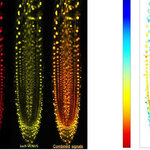Genetics & Molecular Biology

Researchers have mapped the physical structure of the nuclear landscape to better understand changes in genomic interactions occurring in cell senescence and aging.
Their findings have allowed them to reconcile the contradictory observations of two current models of aging: cellular senescence of connective tissue cells called fibroblasts and cellular models of an accelerated aging syndrome.
Cellular senescence is an irreversible state of cell cycle arrest and cells enter senescence in response to a variety of stresses. For example, oncogene activation triggers cell senescence as a mechanism…

The betting line created for this weekend's Super Bowl is done by very smart people. They are not trying to fool anyone, they want the betting to be as even as possible and they make their money on a 'commission' - the vigorish or 'vig' - from the winners. It's not like selling football jerseys, where more volume helps, they need losers to fund the winners so making the odds as even as possible is important.
To do that, they try to take into account everything - which player has a cold, the type of field, the weather, the wind. According to a new study, they may take into account a biological…

Almost 2,500 women of child-bearing age in the United Kingdom are at risk of transmitting mitochondrial disease to their children, evidence of how many families could potentially be helped by new IVF techniques to it.
The paper adds data to emotional debates about new regulations.
Mitochondrial diseases are caused by inherited mutations in the DNA contained in mitochondria - tiny structures present in every cell that generate energy. Mitochondrial diseases can be devastating and particularly affect tissues that have high energy demands - brain, muscle (including heart), liver and…

Mitochondria produce adenosine triphosphate (ATP), commonly called the universal energy currency of the body.
The driver for this process is an electrochemical membrane potential, which is created by a series of proton pumps - positive charges and negative ones. These complex, macromolecular machines are collectively known as the respiratory chain.
The structure of the largest protein complex in the respiratory chain, that of mitochondrial complex I, has been examined by scientists from the Frankfurt "Macromolecular Complexes" cluster of excellence, working together with the University of…

Scientists may be on the way to genetically modifying plants to naturally protect against pests in new ways. That is good news for people in developing nations and fans of the environment. Older insecticides present environmental and health risks and insects develop resistance to them, complicating pest-control strategies.
Along with that, millions of deaths result from diseases transmitted by insects each year, not to mention economic losses totaling billions of dollars annually.
Enter "insect-specific growth regulators," which, as their name suggests, are compounds that regulate the…

Researchers have used human induced pluripotent stem cells (iPSCs) to generate new hair, the first step toward the development of a cell-based treatment for people with hair loss.
In the United States alone, more than 40 million men and 21 million women are affected by hair loss. The research team developed a protocol that induced human pluripotent stem cells to become dermal papilla cells. They are a unique population of cells that regulate hair-follicle formation and growth cycle.
Human dermal papilla cells on their own are not suitable for hair transplants because they…

Scientists have gained new insight into fragile X syndrome, the most common cause of inherited intellectual disability, by studying the case of a person without the disorder, but with two of its classic symptoms.
Fragile X syndrome results from an inherited genetic error in a gene called FMR1. The error prevents the manufacture of a protein called FMRP. Loss of FMRP is known to affect how cells in the brain receive signals, dialing up the amount of information allowed in. The gene is on the X chromosome, so the syndrome affects males more often and more severely than females, who may be able…

When there is a market, someone will sell to it, even if it does not make much sense. So you can purchase organic pineapples and non-GMO rock salt if it makes you feel better.
In Europe, most genetically modified foods, as European politicians define them, are banned but cows eat GMO feed. The cows can't tell the difference nor have studies shown any difference in milk production or meat. Vermont passed a GMO labeling law but made sure to exempt cows so that the $300 million company run by the primary funder of the Just Label It campaign could still use milk from Vermont cows fed GMO…

A new study finds that vitamin D can protect some people with colorectal cancer by boosting the immune system's vigilance against tumor cells.
The research in Gut represents the first time that a link between vitamin D and the immune response to cancer has been shown in a large human population. The authors believe their work advances the idea that vitamin D, known as the "sunshine vitamin" because it is produced by the body in response to sunlight exposure, plays a role in cancer prevention.
"People with high levels of vitamin D in their bloodstream have a lower overall risk of developing…

Scientists have developed a new biosensor that allows them to see, in real time, what happens when a plant’s defenxe system swings into action.
When plants come under attack internal alarms signal and their defense mechanisms swing into action. For the first time, plant scientists have imaged, in real time, what happens when plants beat off the bugs and respond to disease and damage.
Malcolm Bennett, Professor in Plant Science at The University of Nottingham and Director of the Centre for Plant Integrative Biology, said, “Understanding how plants respond to mechanical damage, such as insect…